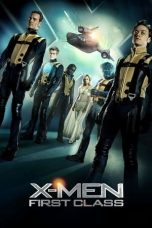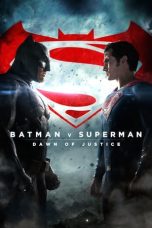- Source: The Known World
The Known World is a historical novel by American author Edward P. Jones, published in 2003. Set in antebellum Virginia, the novel explores the complex and morally ambiguous world of slavery, focusing on the unusual phenomenon of black enslavers. The book received widespread critical acclaim for its innovative storytelling, richly drawn characters, and profound examination of power, race, and the human condition in the context of American slavery.
Plot summary
The novel centers around Henry Townsend, a formerly enslaved Black person who becomes an enslaver in Manchester County, Virginia. The story opens with Henry's death in 1855 and then moves back and forth in time, exploring the events leading up to and following his passing.
Born into slavery, Henry is freed as a young man when his father, Augustus Townsend, purchases his freedom. However, Henry goes on to become an enslaver himself, acquiring over 30 enslaved people to work on his tobacco plantation. This decision creates tension with his parents and challenges readers' expectations about the institution of slavery.
The narrative explores the lives of various characters connected to the Townsend plantation:
Caldonia, Henry's widow, who struggles to maintain the plantation after his death
Moses, the plantation's overseer, who harbors ambitions of taking Henry's place
Fern Elston, a free black woman who taught Henry and becomes a confidante to Caldonia
Sheriff John Skiffington, who enforces the slave laws while personally opposing slavery
As the story unfolds, it reveals the complexities and contradictions of a society built on human bondage. The disappearance of several enslaved people from the Townsend plantation sets in motion a series of events that expose the fragile nature of the social order.
Themes
= Slavery and power dynamics
=The Known World explores the complex power dynamics within the system of slavery, challenging simplistic notions of race and authority. By focusing on black enslavers, Jones forces readers to confront the uncomfortable reality that racial lines did not solely define the institution of slavery. The novel examines how power corrupts regardless of race and how individuals can perpetuate systems of oppression even when they have experienced that oppression themselves.
= Moral ambiguity
=Jones presents a world where moral absolutes are rare, and characters often make ethically questionable but understandable choices within their context. This nuanced portrayal challenges readers to consider the complexities of human nature and how societal structures can shape individual morality.
= Memory and history
=The novel's non-linear narrative structure, which moves between past and present, emphasizes the importance of memory and history in shaping the characters' lives and the broader society. Jones explores how personal and collective memories are constructed, preserved, and sometimes deliberately forgotten.
Style and structure
Jones employs a unique narrative style in The Known World, characterized by:
Non-linear storytelling: The novel moves back and forth in time, gradually revealing the interconnected histories of its characters.
Omniscient narrator: The narrator possesses god-like knowledge of past, present, and future events, allowing for a comprehensive view of the novel's world.
Interweaving of multiple storylines: The novel follows numerous characters and subplots, creating a rich tapestry of narratives illuminating different aspects of slave society.
Use of prolepsis: Jones frequently foreshadows future events, creating a sense of certainty and highlighting the long-term consequences of characters' actions.
This complex structure allows Jones to explore the far-reaching consequences of slavery on individuals, families, and the broader community while also challenging readers' understanding of the historical narrative.
Reception
The Known World received widespread critical acclaim upon its release. According to the review aggregator Book Marks, the novel received a "positive" consensus based on five critic reviews.
Critics praised Jones's prose style, complex characterizations, and innovative approach to historical fiction. The New York Times lauded Jones's skill in intertwining stories within stories, creating a rich and multilayered narrative. The Washington Post commended the novel for its "unpredictable relations of race and power in the antebellum South."
Some reviewers noted the novel's challenging structure and the demands it places on readers. However, most agreed that the complexity of the narrative was integral to the book's exploration of its themes.
Awards and recognition
The Known World received numerous prestigious literary awards, including:
Pulitzer Prize for Fiction (2004)
National Book Critics Circle Award for Fiction (2003)
International Dublin Literary Award (2005)
The novel was also a finalist for the 2003 National Book Award.
In addition to these awards, The Known World has been recognized in several notable literary rankings:
In 2009, a panel of 48 critics, writers, and editors polled by The Millions voted the novel the second-best book published since 2000.
In 2015, the BBC ranked The Known World as the "second greatest novel of the 21st century so far" based on a poll of American critics.
In 2024, the New York Times ranked it the 4th best book of the 21st century.
Legacy and influence
The Known World has had a significant impact on contemporary literature, particularly in the realm of historical fiction and narratives dealing with slavery. The novel's innovative approach to storytelling and its nuanced exploration of power dynamics have influenced subsequent works in the field.
The book has also sparked academic discussions on the representation of slavery in literature, the role of African Americans in the institution of slavery, and the challenges of narrating traumatic histories. Its success has contributed to a renewed interest in exploring lesser-known aspects of American slavery and has encouraged other authors to challenge conventional narratives about the antebellum South.
In educational settings, The Known World has become a frequent choice for college literature courses, particularly those focusing on African American literature, historical fiction, or the literature of slavery. The novel's complex structure and themes provide rich material for literary analysis and discussions about history, race, and power in America.
References
Further reading
Ryan, Tim A. (2008). "Mapping the Unrepresentable: Slavery Fiction in the New Millennium". Calls and Responses: The American Novel of Slavery since Gone with the Wind. Baton Rouge: Louisiana State University Press. pp. 185–208. ISBN 978-0-8071-3322-4.
External links
Interviews
The Known World” (P. Cobbs, Interviewer). (2003, October 28). National Public Radio.
'The Known World', audio from National Public Radio, Morning Edition, October 28, 2003
The Known World at Open Library
Reviews
'The Known World', review in Pop Matters, by Stephen M. Deusner, 5 January 2004
"A transcendent story of slavery unfolds in black and white", review in The Boston Globe, by John Freeman, October 19, 2003
Review of The Known World, in storySouth, by Dan Schneider, 2007
"People who owned people", review in The New York Times, by John Vernon, August 31, 2003
[https://www.washingtonpost.com/archive/entertainment/books/2003/08/24/a-new-novel-charts-some-unpredictable-relations-of-race-and-power-in
Kata Kunci Pencarian:
- Daftar film Marvel Cinematic Universe
- Prince (penyanyi)
- Penghargaan Pulitzer 2004
- Elon Musk
- Porta (jaringan komputer)
- Chris Pratt
- Cemara
- Gulag: A History
- Ha Soo Bin
- Brandon Lee
- The Known World
- Known world
- List of people known as the Great
- There are unknown unknowns
- Known Space
- List of oldest trees
- Seven Wonders of the Ancient World
- Early world maps
- World domination
- World of A Song of Ice and Fire
- 1
- 2
X-Men: First Class (2011)
The Transporter Refueled (2015)
Batman v Superman: Dawn of Justice (2016)
The Deadly Breaking Sword (1979)
No More Posts Available.
No more pages to load.














